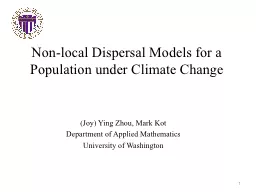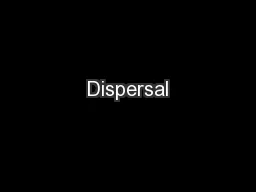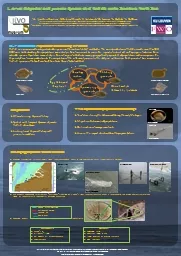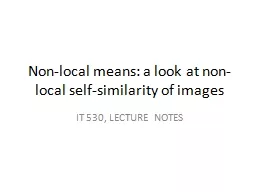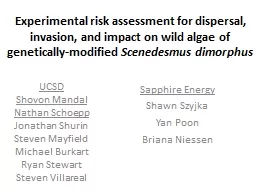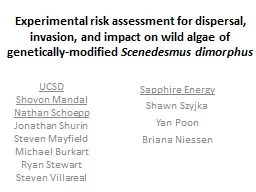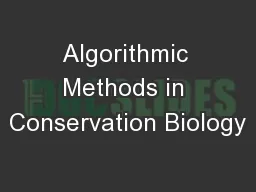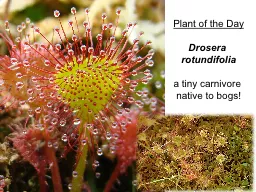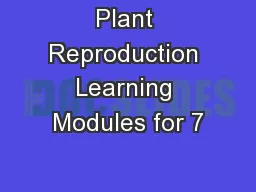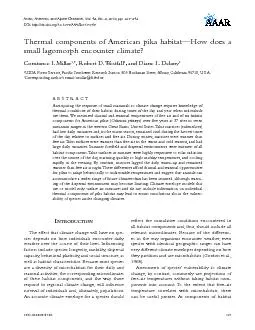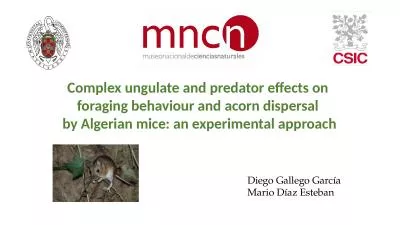PPT-Non-local Dispersal Models
Author : pasty-toler | Published Date : 2016-03-03
for a Population under Climate Change Joy Ying Zhou Mark Kot Department of Applied Mathematics University of Washington 1 Cartoon of a Range Shift 2 3 Global mean
Presentation Embed Code
Download Presentation
Download Presentation The PPT/PDF document "Non-local Dispersal Models" is the property of its rightful owner. Permission is granted to download and print the materials on this website for personal, non-commercial use only, and to display it on your personal computer provided you do not modify the materials and that you retain all copyright notices contained in the materials. By downloading content from our website, you accept the terms of this agreement.
Non-local Dispersal Models: Transcript
Download Rules Of Document
"Non-local Dispersal Models"The content belongs to its owner. You may download and print it for personal use, without modification, and keep all copyright notices. By downloading, you agree to these terms.
Related Documents

